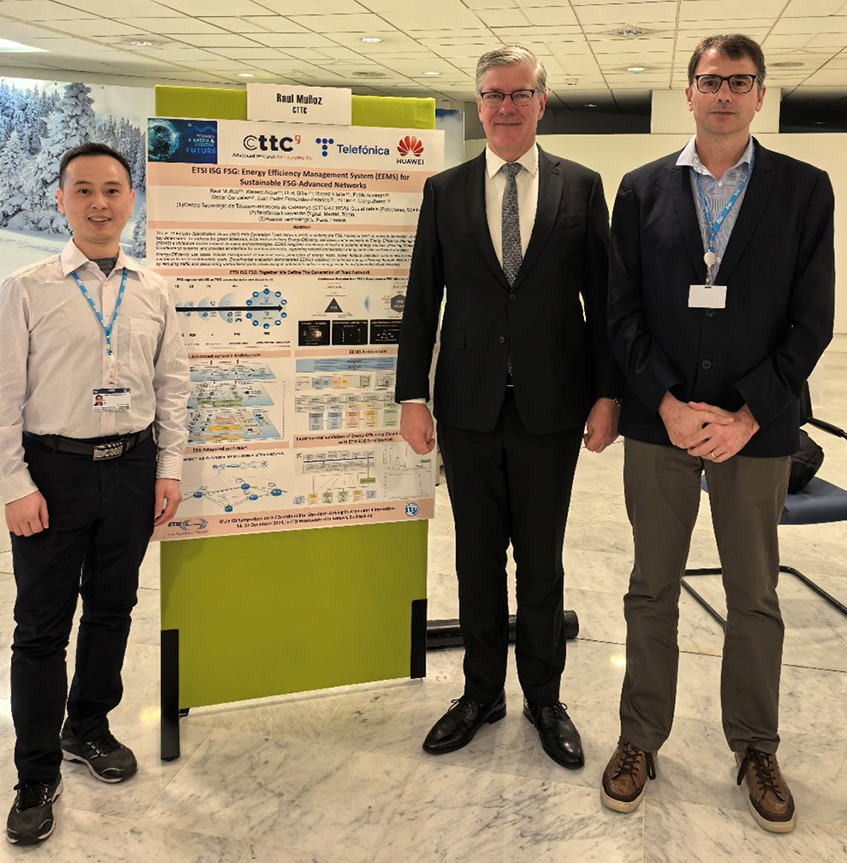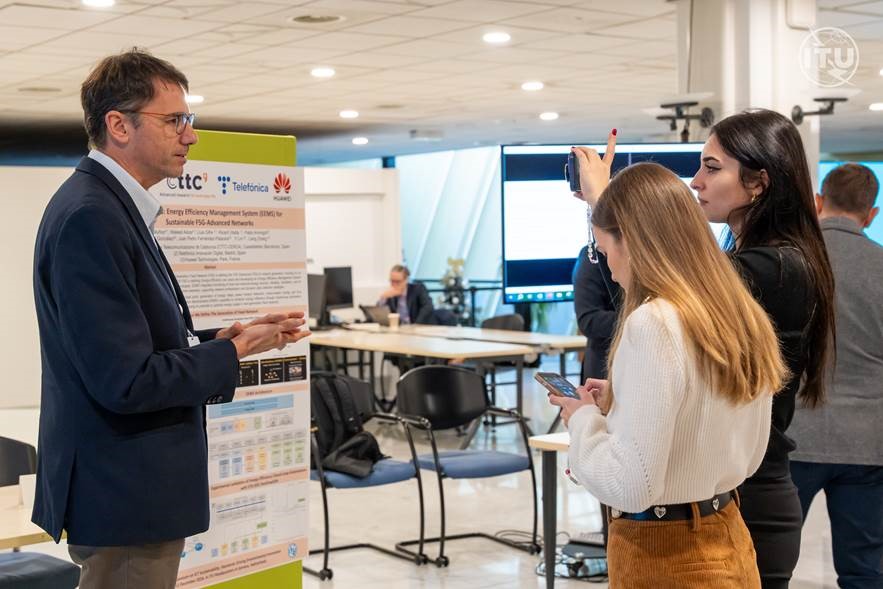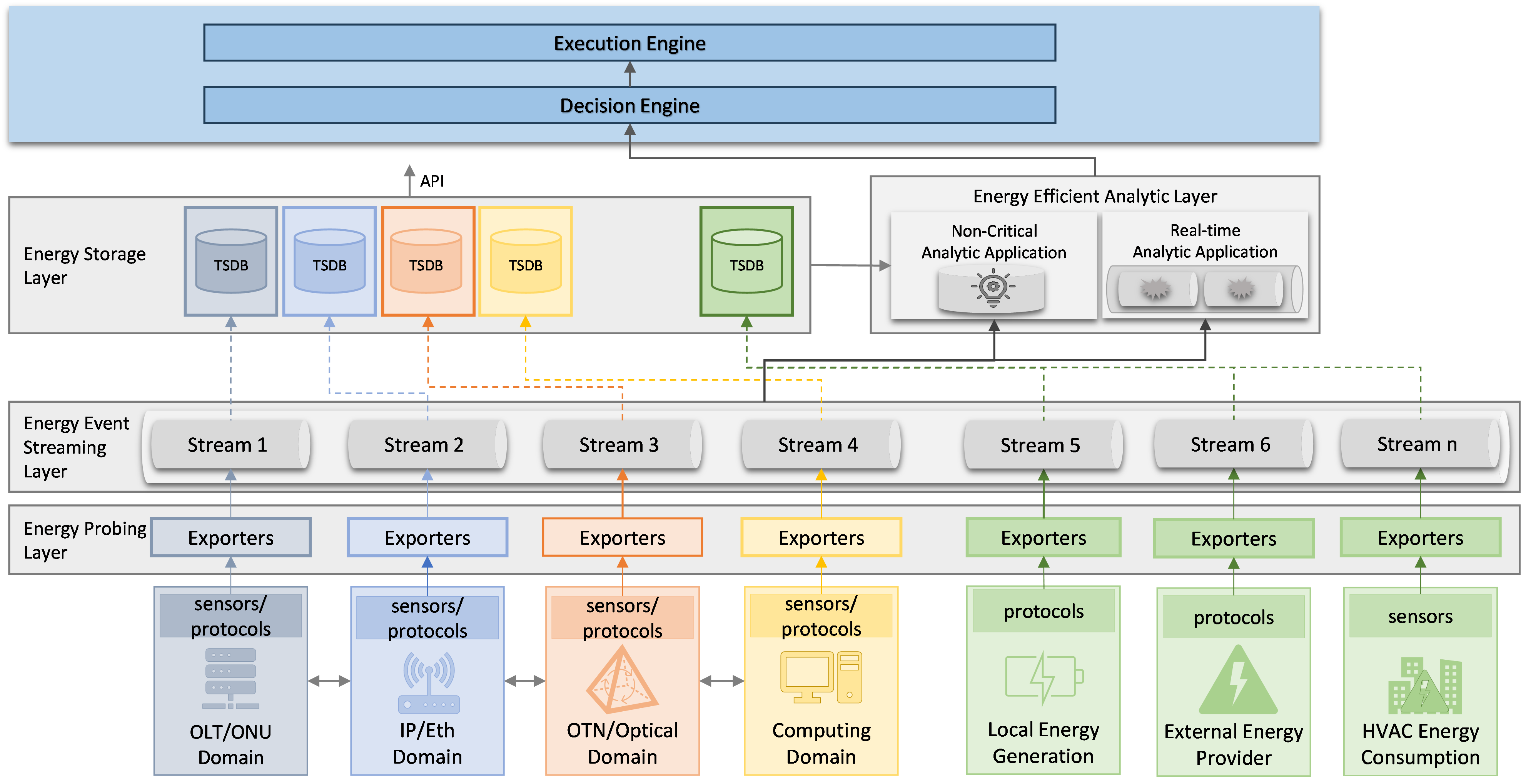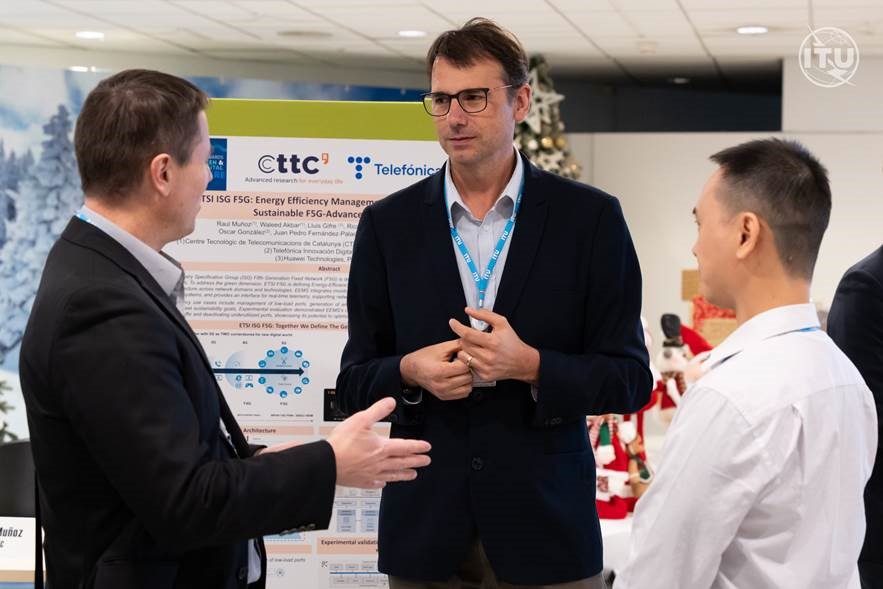ISG F5G Poster Showcase @ ITU-ETSI Symposium on ICT Sustainability: F5G-A Energy Efficiency Management
The International Telecommunication Union (ITU) and the European Telecommunications Standards Institute (ETSI) jointly organized the "ITU-ETSI Symposium on ICT Sustainability: Standards Driving Environmental Innovation", held on 11–12 December 2024 at ITU Headquarters in Geneva, Switzerland. It brought together industry leaders, policymakers, researchers and stakeholders to explore the crucial role of standards in promoting sustainable ICT practices. Standards guide the development of technologies that minimize environmental impact and enhance energy efficiency.
The ETSI Industry Specification Group (ISG) on Fifth Generation Fixed Network (F5G) showcased a poster titled “ETSI F5G Energy-Efficiency Use Cases and Autonomous Management Architecture for Sustainability in F5G‑Advanced Networks” in the exhibition area throughout both days of the symposium. The poster, presented by Raul Muñoz from CTTC and Yi Lin from Huawei, highlighted the work on energy-efficiency management in F5G‑advanced networks developed by CTTC, Telefónica and Huawei, conducted under Work Item 027 (F5G Advanced End-to-End Management and Control Release 3).
The presentation garnered significant interest from delegates, including a visit by Jan Ellsberger, Director General of ETSI.

Visit of Jan Ellsberger, Director General of ETSI, at the F5G poster

Photos taken from ITU website
ETSI F5G Energy-Efficiency Use Cases and Autonomous Management Architecture for Sustainability in F5G-Advanced Networks
ETSI ISG F5G is studying and defining the F5G Advanced (F5G-A) network generation addressing six dimensions: enhanced fixed broadband, full-fiber connections, guaranteed reliable experience, optical sensing & visualization, real-time resilient link, green agile optical network.
To cope with the green dimension, ETSI F5G is designing an energy efficiency management system (EEMS) architecture. The F5G Distributed Energy Efficiency Management System provides a mechanism for collection, processing, and analysis of energy monitoring data across various network segment domains (e.g., access, aggregation, core) and technologies (packet, optical, computing). The system can monitor and analyse both local (solar photovoltaic (PV), wind power, and fuel cells) and external energy generation sources, and it includes capabilities to monitor HVAC (Heating, Ventilation, and Air Conditioning) equipment.
This system defines an interface that grants the E2E network and service orchestrator and network domain controllers direct access to energy monitoring and telemetry information. This access supports both real-time and non-critical analytics, enabling the autonomous reconfiguration of network. Furthermore, EEMS supports dynamic data collection strategies, enabling applications or instances to subscribe to single or multiple energy data streams. EEMS provides a central interface that allows network engineers to obtain a comprehensive overview of energy consumption and generation.

Energy Efficiency Management System (EEMS) Architecture for F5G-A networks
The proposed energy-efficient management architecture consists of several components:
- The energy probing layer, which measures traffic load and energy utilization of the devices, services and operations.
- The energy streaming layer, which processes monitoring data in real-time with redundancy.
- The energy storage layer, which stores data for further processing such as visualization.
- The energy analytics layer, which performs real-time and non-critical analysis.
The considered use cases for F5G-advanced networks includes:
- Transition to an energy-efficient network state by deactivating all low-load ports;
- Generating an energy map to show the overall network energy consumption;
- Detecting power hot spots by identifying the devices with high energy consumption;
- Carbon-aware routing by the selecting routes with the lowest carbon intensity;
- Validating energy-related SLAs to support sustainability goals.
We have experimentally evaluated the energy-efficient management system by measuring the traffic load on device ports and identifying those with low traffic. Subsequently, SDN controllers can reroute the traffic to an alternative path and deactivate the selected port to save energy. This completes closed-loop automation to enhance network energy efficiency.


